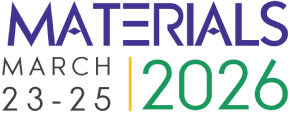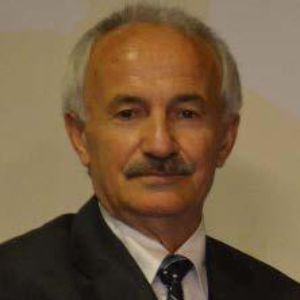Title : Shape Reversibility and Displacive Transformations in Shape Memory Alloys
Abstract:
Some materials take place in class of advanced smart materials with adaptive properties and stimulus response to the external changes. Shape memory alloys take place in this group by exhibiting a peculiar property called shape memory effect, which is characterized by the recoverability of two certain shapes of material at different temperatures in reversible way. Shape memory effect is initiated on cooling and deformation the material and performed thermally on heating and cooling after first cooling and stressing treatments. Therefore, this behavior is called thermoelasticity. This deformation is plastic deformation, with which strain energy is stored in the material and released on heating by recovering the original shape.
These alloys exhibit another property called superelasticity which is performed in only mechanical manner, by stressing and releasing the material at a constant temperature in parent phase region and recover the original shape simultaneous and instantly on releasing the external forces. These alloys are used shape memory elements in many fields from biomedical to the building industry. These phenomena are result of crystallographic transformations in the materials, called martensitic transformations, by which crystalline structure of the material change. Shape memory effect is governed by successive thermally and stress induced martensitic transformations, on cooling and stressing. Thermal induced martensitic transformation occurs on cooling with cooperative movement of atoms by means of lattice invariant shears in <110> - type directions on {110} - type planes of austenite, along with lattice twinning and ordered parent phase structures turn into twinned martensite structures. These twinned structures turn into detwinned martensite structures by means of strain induced martensitic transformation with deformation in martensitic state. These alloys exhibit another property called superelasticity, which is performed by stressing and releasing material at a constant temperature in parent phase region, and shape recovery is performed simultaneously upon releasing the applied stress. Superelasticity is performed in non-linear way; stressing and releasing paths are different in the stress-strain diagram, and hysteresis loop refers to energy dissipation. Superelasticity is also the result of stress-induced martensitic transformation, and parent austenite phase structures turn into the detwinned martensite structure with the stressing.
Copper based alloys exhibit this property in metastable b- phase region, which has bcc-based structures at high temperature parent phase field. Lattice invariant shear and twinning is not uniform in copper alloys, and they give rise to the formation of unusual layered complex structures, like 3R, 9R or 18R structures depending on the stacking sequences, with lattice twinning. Unit cell and periodicity is completed through 18 layers in direction z, for 18R martensite structures in ternary copper-based alloys.
In the present contribution, electron diffraction and x-ray diffraction studies performed on two copper- based CuZnAl and CuAlMn alloys. Electron diffraction patterns and x-ray diffraction profiles show that these alloys exhibit super lattice reflections in martensitic condition. Specimens of these alloys aged at room temperature in martensitic condition, and a series of x-ray diffractions were taken duration aging at room temperature. Reached results show that diffraction angles and peak intensities change with aging time at room temperature. Some of the successive peak pairs providing a special relation between Miller indices come close each other, and this result leads to the rearrangement of atoms in diffusive manner.
Keywords: Shape memory effect, martensitic transformation, thermoelasticity, superelasticity, lattice twinning, detwinning.
What will audience learn from your presentation?
- Shape memory alloys are multifunctional materials and used in many fields. Shape memory effect is multidisciplinary subject. This conference is also multidisciplinary conference, and I will introduce the basic terms and definition about shape memory effect ant martensitic transformation at the beginning of my talk, considering every delegate is not familiar with this phenomenon.



